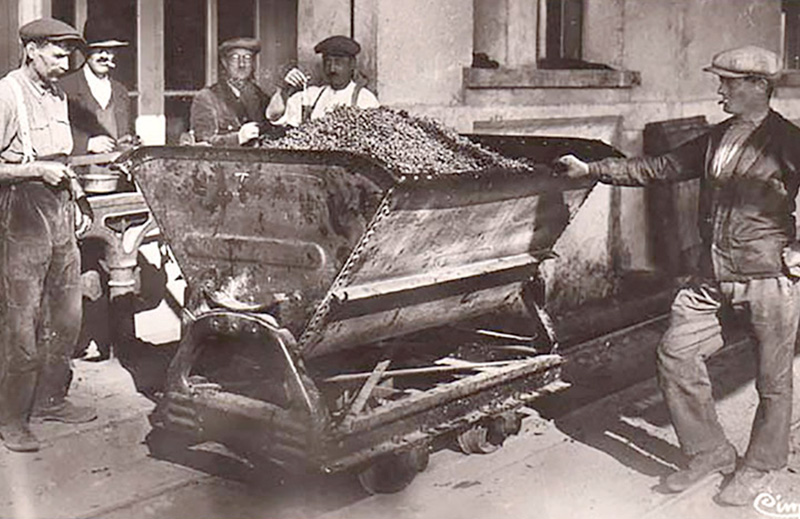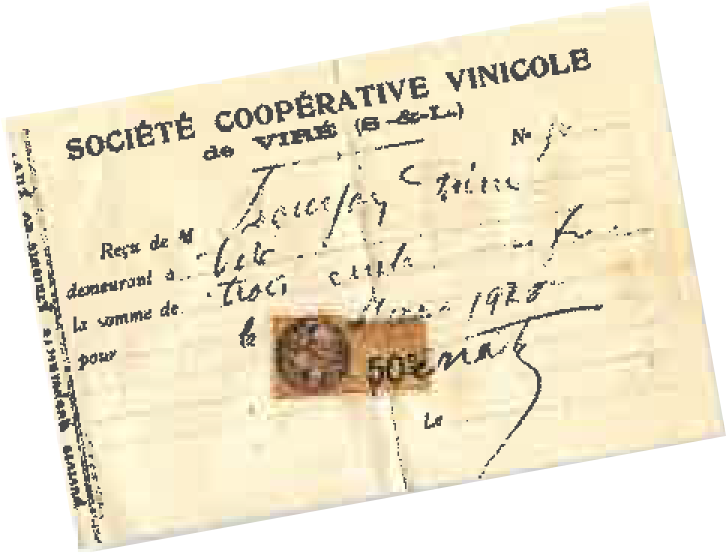OUR RICH HISTORY



Vérizet: a renaissance
Vérizet is the name of a village that no longer exists, as it is now part of Viré. Viré and Vérizet merged in 1968 and the named geographical location of Vérizet was consigned to the past. And yet it lives on through our wines!
Viré: a destiny in a name
The Latin word viriaco, meaning “vine cultivation”, attests to the ancient roots of Viré’s wine-growing tradition. The cartularies of Saint-Vincent de Mâcon and Cluny record wine payments as early as the 7thcentury in Viré and Quintaine, indicating that wine has historically been the area’s main crop. The village of Viré belonged in turn to the bishop and to the chapter of Mâcon cathedral. In circa 1000, the vineyard extended from Morgon to Tournus, including Viré, Uchizy and Plottes, among other villages. On 19 January 1616, Viré and its vineyards were listed in the inventory of the Châtellenie de Vérizet.

Our cellar will soon be 100 years old
1928 – Beginnings
The Cave Coopérative de Viré was founded in 1928.
Various producers voluntarily joined forces with the aim of surviving the
financial difficulties caused by the First World War and phylloxera.
The Cave had always been renowned for the quality of its white wines and was also very much ahead of its time commercially.
From 1958 onwards, under the chairmanship of René Boudier, it began to
market its wines in Paris where a cuvée of Viré wine was inaugurated annually in Montmartre, which was twinned with Viré.
The first cellar to retail wine by the litre, it went on to pioneer the
sale of the 75 cl bottle in 1970. The Cave entered the export market
in 1972, going against the advice of the Burgundy wine trade, which subsequently boycotted its wines.
1995 – An alliance is formed
The Cave de Sennecé-lès-Mâcon strengthened and supported
Viré’s business, which had suffered from the urban development of the town of Mâcon and the surrounding area, losing land and estates.
A merger took place in 1995 between the two wine cellars, leading
to the creation of the “chai de Sennecé”, a storehouse located in the centre of the village.
1999 – La naissance d’une appellation
L’appellation Viré-Clessé voit le jour par décret du 26 février 1999 et devient la 5th municipal appellation in the Mâconnais.
It ultimately took 61 years and an alliance between winegrowers in the villages of Viré and Clessé before the INAO approved the appellation.
From that point on, the regional appellation of Mâcon-Viré, originally created in 1936, became the village appellation of Viré-Clessé.
Grape harvesting, vinification, blending and élevage of the wines is carried out at the following locations in the department of Saône-et-Loire: Clessé, Laizé, Montbellet and Viré. The total surface area of the vineyard is 390 hectares.
2009 – The Cave de Viré opens its doors
In the late 2000s, the Cave de Viré began a new venture. It contributed to the renovation of the centre of the village of Viré by establishing a new tasting venue right by the production buildings. This signalled the genesis of the Cave de Viré as the brand it is today. The venue is dedicated to tasting and presenting our terroirs.
The Cave de Viré in figures
• Surface area of vines linked to the Cave:
250 hectares
• Wine producers: 110 cooperative members
including 30 winegrowers
• Average production: 15,000 hectolitres
• 6 appellations
• 18 employees
• 1,500,000 bottles produced annually
APPELLATIONS
AOP Mâcon
AOP Mâcon-Villages
AOP Mâcon Péronne
AOP Mâcon Lugny
AOP Viré-Clessé
AOP Crémant de Bourgogne

The first purchase order,
dated 4 March 1928
